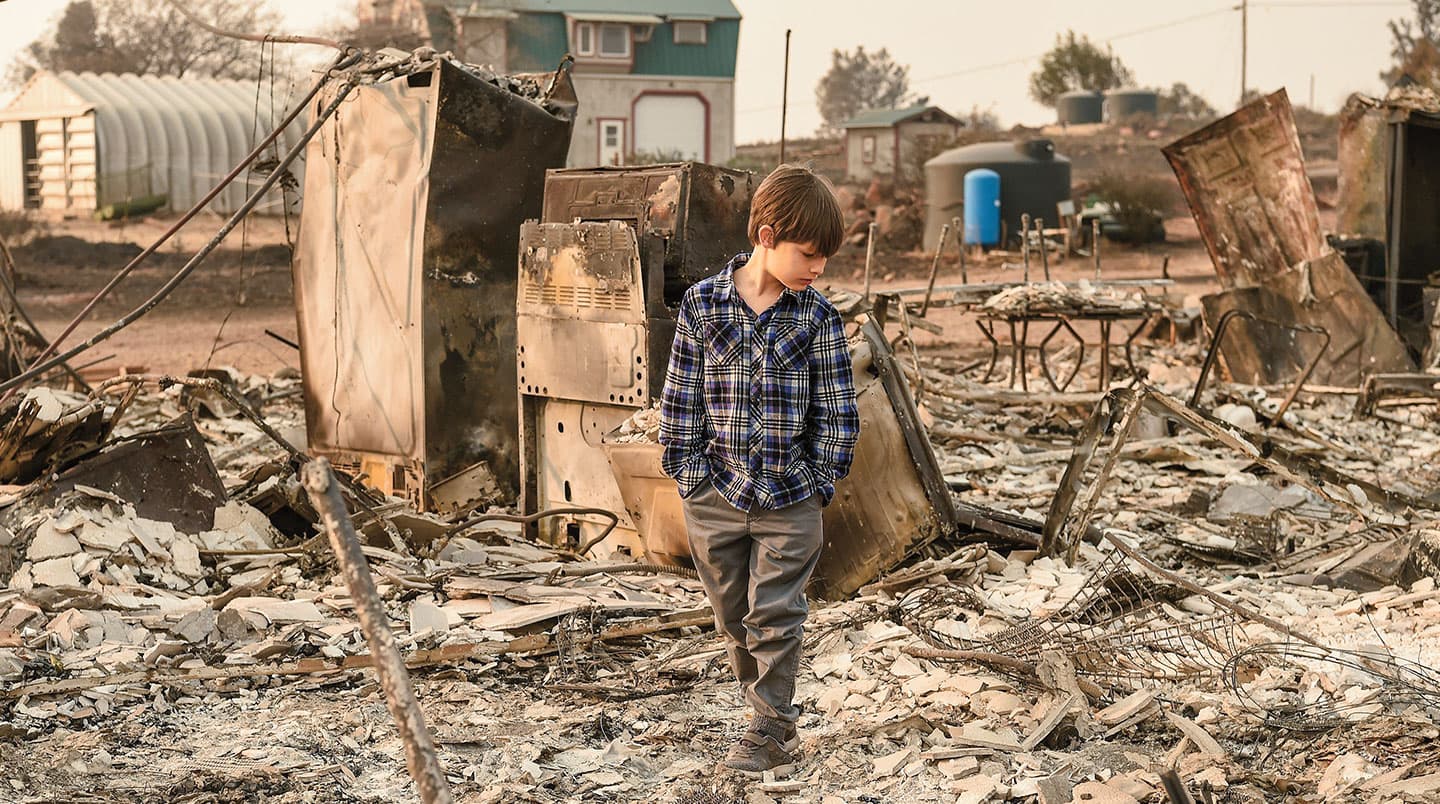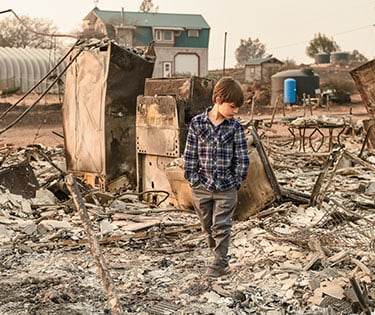Jim McMahon/MapMan®
Thousands of people crammed onto the roads leading out of Paradise as massive flames erupted. Thick black smoke filled the air, turning the bright California day as dark as night. In some places, the sky glowed an eerie blood red, transformed by the blaze.
It was the morning of November 8, 2018, and flames from the wildfire stretched 200 feet high. As the wind got stronger, leaves, twigs, and other burning debris rocketed through the air, igniting anything and everything they touched. Before long, the fire was spreading too fast to be contained, devouring an area the size of a football field every second.
With little warning and just a few minutes to pack, panicked residents grabbed their most treasured belongings—family photos, electronics, stuffed animals. But as they rushed to evacuate, many got stuck in huge traffic jams. Others found their escape routes blocked by fallen trees, abandoned vehicles, or a wall of fire.
Desperate, some people got out of their cars and ran for their lives, the soles of their sneakers melting on the pavement as they fled.
Thousands of people crammed onto the roads leading out of Paradise as large flames erupted. Thick black smoke filled the air. It turned the bright California day as dark as night. In some places, the sky glowed an eerie blood red, changed by the blaze.
It was the morning of November 8, 2018. Flames from the wildfire stretched 200 feet high. The wind got stronger. Leaves, twigs, and other burning debris rocketed through the air. They set fire to anything and everything they touched. Before long, the fire was spreading too fast to be contained. It swallowed up an area the size of a football field every second.
Scared residents had little warning and just a few minutes to pack. They grabbed their most treasured items, including family photos, electronics, and stuffed animals. As they rushed to get away, many got stuck in huge traffic jams. Others found their escape routes blocked by fallen trees, abandoned vehicles, or a wall of fire.
Desperate, some people got out of their cars and ran for their lives. The soles of their sneakers melted on the pavement as they fled.



